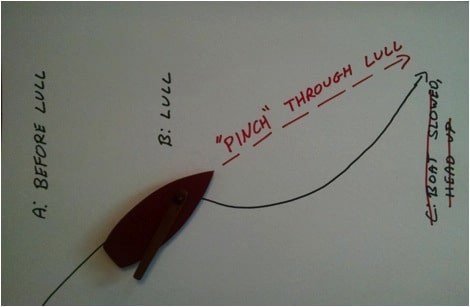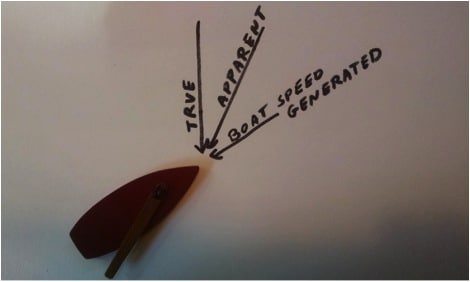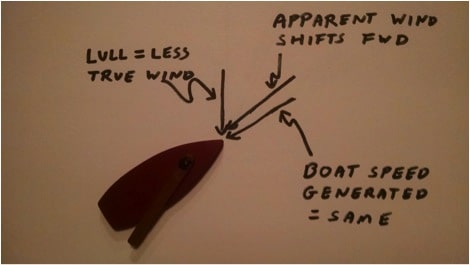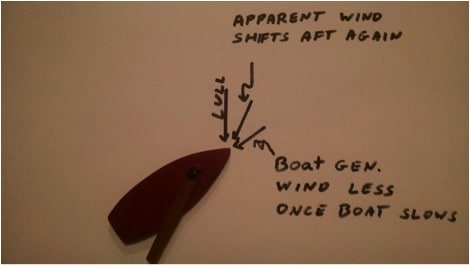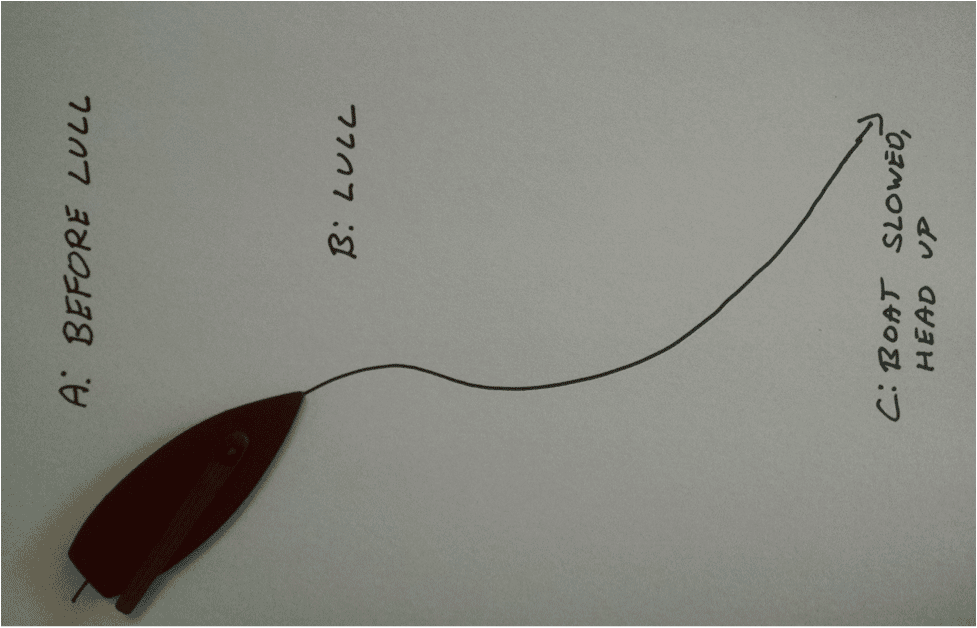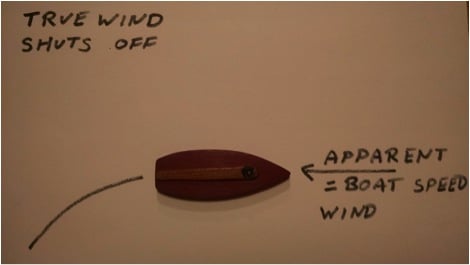We were in Newport, R.I., last summer doing some straight-line upwind speed tests. The puffs felt good with crew weight nicely on the rail, but the lulls sent the crew scurrying inboard to balance the boat. The helm got that terrible squishy feeling and the jib’s windward tales stalled.
My focus was on those windward jib tell tales and it seemed logical to bear off to keep them flowing, but I had to bear off a lot, and I lost height with almost no forward gain. I was losing VMG, and even worse, I gave up my gap on the boat to leeward.
So my trimmer convinced me to patiently sail into the next lull doing nothing with the helm. I fought my instinct to bear off, and instead, allowed the jib tales to stall while the boat decelerated over the next few boatlengths. We did ease both the main and jib sheets just a little to keep both leeches from hooking in with the decreased pressure. I waited until I felt we were down speed before I readjusted my steering angle to match the new lighter wind. It worked! We were now able to keep our height as we transitioned into the lull with little loss in forward.
An admittedly unrealistic example helps illustrate why it works. Suppose the wind instantly and completely switches off. Now the apparent wind is only caused by the boat moving forward, so it is dead in front and we will be luffing no matter which way the boat points. If I bear off to try and get my sails full, I will still be luffing head to wind no matter how much I bear off.
Extending that logic, in a lull, instead of bearing off or going straight, we could head up a little and burn off speed to VMG toward the mark, then bear off once down to the new speed. I don’t think that is practical. Instead, at the onset of a lull, I think it makes more sense to just be patient and steer a straight line.
Ultimately, once slowed to the new slower speed, the sailing angle will not be exactly the same as before the lull. The angle will be a little lower in the lighter wind. Additionally, there may be some change in wind direction, as often is the case with a puff or a lull. So what I like to do is ease into whatever the new heading is, slowly and with minimal steerage through those boatlengths it takes to slow down.
As the wind softens in a lull, it is powerful to hold that lane by holding course, effectively pinching through the lull. If all goes well, I will use minimum steerage to be on the correct new heading at about the same time the boat is at its new slower speed.
